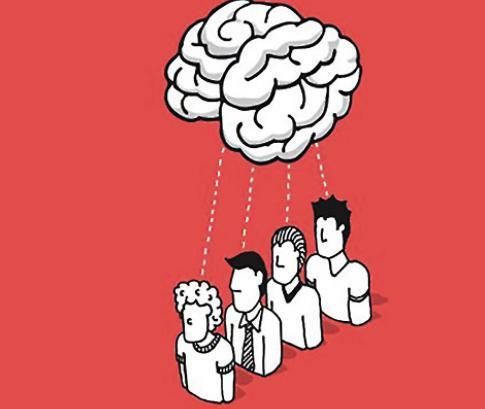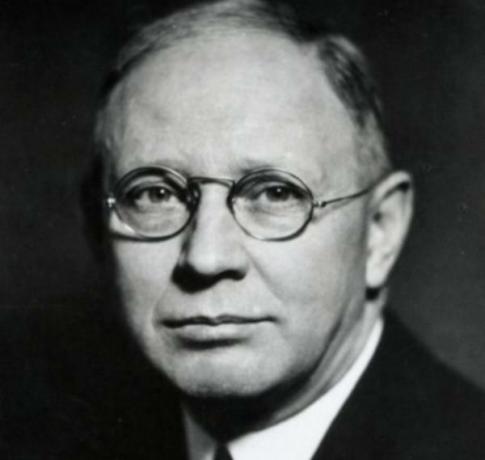
One of the most important and widespread ways to change attitudes is through communication. Not all persuasive messages convince people. Psychosocial factors influence the lesser or greater effectiveness of a persuasive message.
The Yale University Research Group
Research developed by HOVLAND and McGUIRE, among others.
According to this approach, for a persuasive message to change attitude and behavior, it has to change thoughts beforehand or beliefs of the recipient of the message. This change in beliefs will occur whenever the recipient receives beliefs other than their own, accompanied by incentives.
KEY ELEMENTS in the persuasion process, on which the effectiveness of the persuasive message will depend: The source. The content of the message. The communication channel. The context.
The effects of the 4 elements are modulated by the characteristics of the receivers:
- degree of susceptibility to persuasion
- previous beliefs
- self-esteem.
The PSYCHOLOGICAL EFFECTS that the messages can produce in the receiver:
- ATTENTION (Not all messages that are issued with the intention of persuading reach the recipients. If it is not attended, it will have no effect).
- UNDERSTANDING (Overly complex or ambiguous messages can be lost without influencing the receivers).
- ACCEPTANCE (When the recipients come to agree with the persuasive message. It depends on the incentives you offer to the recipient.)
- RETENTION (Required if persuasive communication is to have a long-term effect).
Processes that occur at the recipient of persuasive information (McGuire): Reception and acceptance: Most of the variables on which the effectiveness of a persuasive message can depend, can be analyzed according to their effects on these two factors, which do not have to always be in the same direction.
The cognitive response theory
It focuses on cognitive processes that occur in the recipients of the messages (already evident in McGuire's approach).
Whenever a receiver receives a message, he compares what the source says with his previous knowledge, feelings and attitudes, generating "COGNITIVE RESPONSES". If the thoughts go in the direction indicated by the message, persuasion will take place.
If you go in the opposite direction there will be no persuasion, and the "boomerang effect" can occur.
Recipients are not persuaded by the source or the message but by their own answers to what the source or the message says. The important thing is to determine what factors and how they influence the number of arguments that the receiver generates.
The amount of arguments that the recipient generates depends on: Distraction (decreases them), the recipient's personal involvement (increases them). If the self-generated arguments are in favor of the message, the distraction makes the persuasion less. If the arguments go against the message, the distraction increases the persuasion.
The heuristic model
Many times we are persuaded without realizing it. We are persuaded because we follow certain HEURISTIC RULES OF DECISION, which we have learned through experience and observation.
Persuasion is the result of: Some signal or surface characteristic of the message (length or number of arguments). From the source that emits it (attractiveness or experience). From the reactions of other people who receive the same message. Some of the heuristics used are based on: The experience of the source: "You can trust the experts." On the like: "We like similar people like similar things." In consensus: "It must be good when everyone applauds." The number or length of the arguments used: "With so much to say, you must have a solid understanding." There are also other heuristics applicable in specific situations: "Statistics don't lie."
Heuristic rules are more likely to be used when:
- There is low motivation.
- There is low ability to understand the message.
- There is high prominence of the heuristic rule.
- The elements external to the message itself are very striking.
The elaboration probability model
Produced by PETTY and CACIOPPO.
It focuses on the processes responsible for attitude change, when a message is received, and on the strength of the attitudes that result from those processes. When we receive a message, we have 2 STRATEGIES TO DECIDE IF WE ACCEPT IT OR NOT:
- CENTRAL ROUTE: A critical evaluation of the message is carried out.
- PERIPHERAL ROUTE: Describe the change in attitude that occurs without much thought about the content of the message. Attitudes are more affected by elements external to the message itself. It coincides with heuristic processing. The change in attitude through the central route is more durable and more resistant to counter persuasion.
The 2 strategies constitute the two extremes of the CONTINUOUS PROBABILITY OF PRODUCTION:
- When the probability of elaboration is very high, the central route is being used. When it is very low, the peripheral route is being used.
- On both cases there may be persuasionBut the nature of the persuasive process is different. The ends of the continuum differ quantitatively (As the receiver moves toward the high-probability end of elaboration, the central pathway processes increase in magnitude, and vice versa), and qualitatively (When close to the low-elaboration extreme, peripheral mechanisms not only involve thinking less about the merits of arguments, but thinking differently.)
There are peripheral mechanisms, that involve little effort, and that produce change of attitude, without the need for processing of the merits of the information: The CC, the identification of the source of the message, or the effects of the mere exposition. At intermediate or moderate levels of probability of elaboration, the persuasion process represents a complex mixture of the characteristic processes of each of the routes.
If the receiver takes the central route, the change in attitude will depend on the thoughts that the communication generates in the receiver: If the communication generates favorable cognitive responses, attitudes must change in the direction advocated by the source. If it evokes unfavorable cognitive responses, the change in attitude will be inhibited in the direction advocated by the source, or could even occur in the opposite direction ("boomerang effect").
This article is merely informative, in Psychology-Online we do not have the power to make a diagnosis or recommend a treatment. We invite you to go to a psychologist to treat your particular case.


